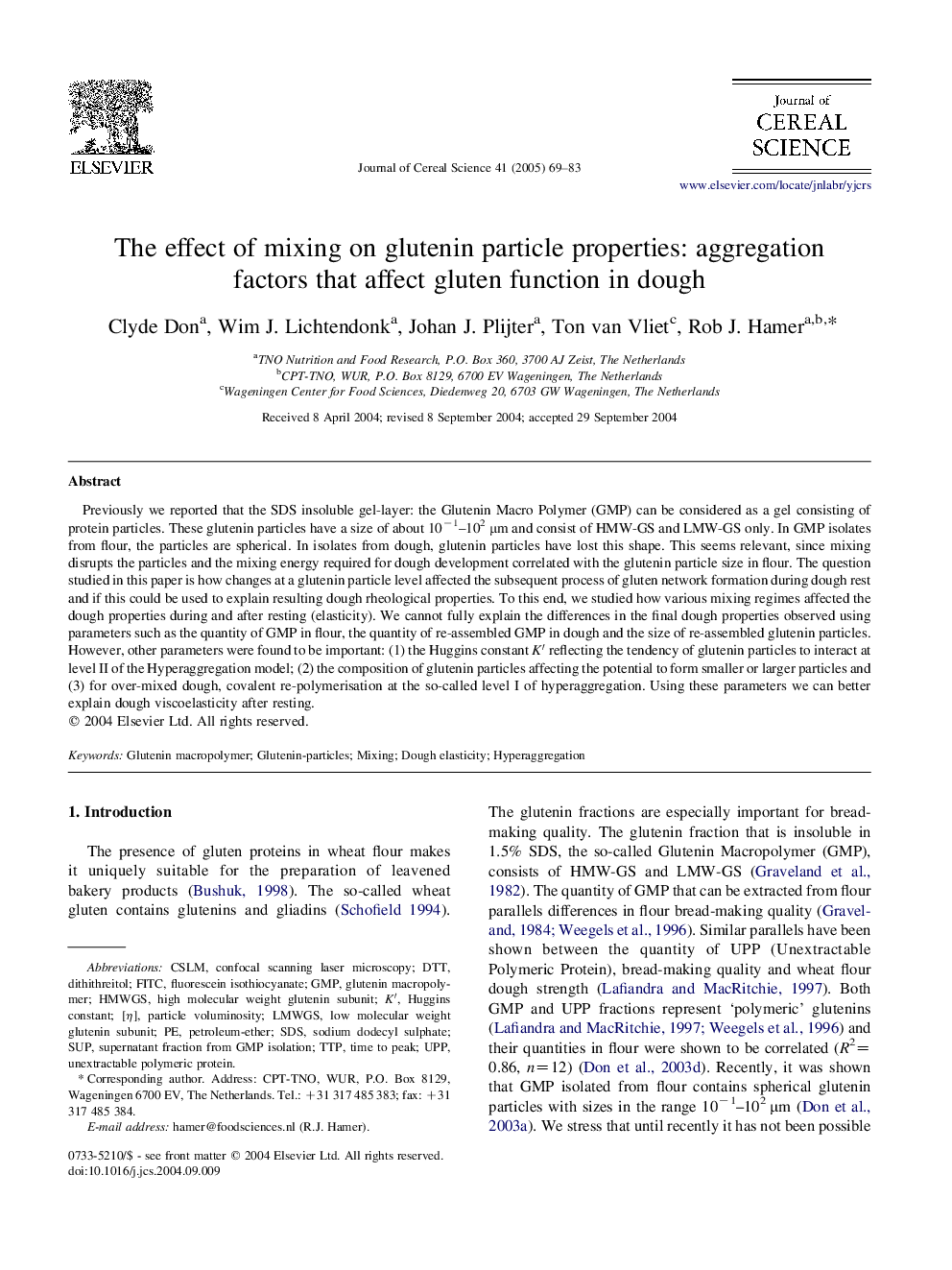| کد مقاله | کد نشریه | سال انتشار | مقاله انگلیسی | نسخه تمام متن |
|---|---|---|---|---|
| 9474556 | 1322384 | 2005 | 15 صفحه PDF | دانلود رایگان |
عنوان انگلیسی مقاله ISI
The effect of mixing on glutenin particle properties: aggregation factors that affect gluten function in dough
دانلود مقاله + سفارش ترجمه
دانلود مقاله ISI انگلیسی
رایگان برای ایرانیان
کلمات کلیدی
[η]FITCDTTK′GMPCSLMSDSTTPUpP - بالاtime to peak - زمان به اوجsodium dodecyl sulphate - سدیم دودسیل سولفاتSup - سوپfluorescein isothiocyanate - فلوئورسین ایسوتیوسیاناتGlutenin macropolymer - ماکروولایمر گلوتنینMixing - مخلوط کردنConfocal scanning laser microscopy - میکروسکوپ لیزر اسکن کنفوکالHuggins constant - هوگینز ثابت استhigh molecular weight glutenin subunit - واحد مولکولی با وزن بالا گلوتنینlow molecular weight glutenin subunit - واحد مولکولی کم گلوتنینunextractable polymeric protein - پروتئین پلیمری غیر قابل استخراج
موضوعات مرتبط
علوم زیستی و بیوفناوری
علوم کشاورزی و بیولوژیک
علوم زراعت و اصلاح نباتات
پیش نمایش صفحه اول مقاله

چکیده انگلیسی
Previously we reported that the SDS insoluble gel-layer: the Glutenin Macro Polymer (GMP) can be considered as a gel consisting of protein particles. These glutenin particles have a size of about 10â1-102 μm and consist of HMW-GS and LMW-GS only. In GMP isolates from flour, the particles are spherical. In isolates from dough, glutenin particles have lost this shape. This seems relevant, since mixing disrupts the particles and the mixing energy required for dough development correlated with the glutenin particle size in flour. The question studied in this paper is how changes at a glutenin particle level affected the subsequent process of gluten network formation during dough rest and if this could be used to explain resulting dough rheological properties. To this end, we studied how various mixing regimes affected the dough properties during and after resting (elasticity). We cannot fully explain the differences in the final dough properties observed using parameters such as the quantity of GMP in flour, the quantity of re-assembled GMP in dough and the size of re-assembled glutenin particles. However, other parameters were found to be important: (1) the Huggins constant Kâ² reflecting the tendency of glutenin particles to interact at level II of the Hyperaggregation model; (2) the composition of glutenin particles affecting the potential to form smaller or larger particles and (3) for over-mixed dough, covalent re-polymerisation at the so-called level I of hyperaggregation. Using these parameters we can better explain dough viscoelasticity after resting.
ناشر
Database: Elsevier - ScienceDirect (ساینس دایرکت)
Journal: Journal of Cereal Science - Volume 41, Issue 1, January 2005, Pages 69-83
Journal: Journal of Cereal Science - Volume 41, Issue 1, January 2005, Pages 69-83
نویسندگان
Clyde Don, Wim J. Lichtendonk, Johan J. Plijter, Ton van Vliet, Rob J. Hamer,